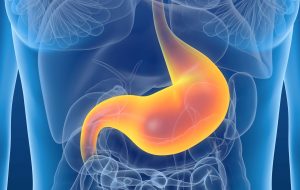Maintaining high energy levels throughout the day can feel like a challenge, especially with the hustle and bustle of daily life. However, your diet is a powerful tool you can use to keep your energy tank full. Let’s dive deeper into how specific dietary choices can provide your body with the fuel it needs for sustained productivity and alertness.
Complex Carbohydrates: Your Steady Fuel Source
Complex carbohydrates are fantastic for providing long-lasting energy. These carbs, found in whole grains, fruits, and vegetables, release glucose slowly into your bloodstream, supplying a steady fuel source. Think of them as the slow-burning log on a fire, keeping the flames alive for hours.
Whole Grains
Incorporating whole grains like quinoa, brown rice, and oats into your meals can help regulate blood sugar levels and prevent energy dips. For instance, starting your day with oatmeal topped with fresh berries not only gives you a delicious breakfast but also equips you with sustained energy until lunch. Quinoa salads, paired with a variety of colorful vegetables, make for an excellent lunch option that continues to fuel your afternoon activities.
Fruits and Vegetables
Fruits and vegetables are not just colorful additions to your plate—they’re powerhouses of essential vitamins and minerals. Including a rainbow of these foods ensures a steady stream of energy. Snack on a banana, which provides quick yet lasting energy, or enjoy a spinach salad with strawberries for both a nutritional boost and an energy uptick.
Energizing Lean Proteins
Protein is crucial for energy production because it aids in repairing and building tissues. Choosing lean protein sources like chicken, fish, tofu, and legumes helps maintain stable energy levels throughout the day.
Examples of Lean Proteins
- Chicken and Fish: Skinless poultry and fatty fish like salmon are excellent sources of amino acids, essential for energy production. A grilled chicken breast with a side of quinoa and steamed veggies makes for a balanced meal that supports sustained energy.
- Plant-Based Proteins: Including plant-based sources like lentils, chickpeas, and edamame adds variety while supporting energy levels. Consider a chickpea salad with lemon and olive oil for a refreshing, protein-rich lunch that’ll keep you energized.
Protein Timing
Distributing protein intake throughout the day helps maintain a steady energy supply. A common mistake is loading up on protein only at dinner, leaving you feeling sluggish in the morning or afternoon. Instead, aim for balanced protein consumption at each meal to promote muscle health and optimize your body’s ability to convert food into energy efficiently.
Healthy Fats: Concentrated Energy
Incorporating healthy fats like avocados, nuts, and olive oil into your diet can significantly enhance your energy levels. Fats are a concentrated energy source, providing a sustained feeling of fullness and preventing energy crashes.
Sources and Benefits of Healthy Fats
- Omega-3 Fatty Acids: Found in fatty fish and chia seeds, these fats support brain function and energy metabolism. A serving of grilled salmon or a chia seed pudding can be both delicious and energizing.
- Monounsaturated Fats: Foods like avocados and almonds help stabilize blood sugar levels. Enjoy an avocado toast with whole-grain bread for breakfast or snack on a handful of almonds in the afternoon for a nutrient-dense energy boost.
The Importance of Hydration
Staying hydrated is essential for maintaining energy levels. Dehydration can lead to fatigue and decreased cognitive function, making it harder to stay focused and productive.
Tips for Staying Hydrated
- Water Intake: Aim to drink plenty of water throughout the day. A good rule of thumb is to carry a reusable water bottle with you as a constant reminder to sip consistently.
- Hydrating Foods: Incorporate hydrating foods like cucumber, watermelon, and soups into your meals. These not only contribute to your fluid intake but also provide essential nutrients. A refreshing cucumber salad or a bowl of gazpacho can be both hydrating and satisfying.
Limiting Refined Sugars
Sugary snacks and drinks might give you a quick energy boost, but the inevitable crash can leave you more tired than before. Reducing refined sugar intake can help maintain steady energy levels.
Smart Swaps for Sugar
- Whole Fruits: Choose whole fruits over processed snacks. An apple or a handful of berries can satisfy your sweet tooth while providing fiber and essential nutrients.
- Fruit-Based Desserts: Swap sugary desserts for options like yogurt with berries or a fruit salad. These choices stabilize blood sugar levels and prevent energy fluctuations.
Navigating Caffeine
Caffeine can offer a temporary lift, but excessive consumption can lead to jitters and crashes. Moderation is key.
Balanced Caffeine Consumption
- Green Tea: Consider green tea as a milder alternative to coffee. It contains a moderate amount of caffeine and beneficial antioxidants that promote alertness and focus without the abrupt energy crashes associated with high caffeine intake.
- Herbal Teas: Herbal teas like peppermint or chamomile offer caffeine-free options that support energy and relaxation. Sip on peppermint tea for a refreshing and energizing boost in the afternoon.
Exploring Additional Energy-Boosting Foods
While we’ve covered some basics, there are plenty of other foods known for their energy-boosting properties. Consider adding these to your dietary arsenal:
Nuts and Seeds
Nuts and seeds are compact nutritional powerhouses. They provide healthy fats, protein, and fiber, all contributing to sustained energy.
- Almonds and Walnuts: These nuts are rich in healthy fats and make for a perfect snack to keep energy levels up. Sprinkle chopped walnuts on your oatmeal or yogurt for an added crunch and energy boost.
- Chia Seeds: These tiny seeds pack a big punch of omega-3s, fiber, and protein. Try a chia seed pudding with almond milk and fresh fruit for a refreshing breakfast or snack.
Fermented Foods
Fermented foods like yogurt, kefir, sauerkraut, and kimchi are great for gut health, which in turn can influence your energy levels.
- Yogurt and Kefir: These are rich in probiotics that promote a healthy gut microbiome, crucial for optimal digestion and energy extraction from food. Enjoy them in smoothies or as breakfast toppings.
- Sauerkraut and Kimchi: These can be added to salads or sandwiches for a tangy, probiotic-rich boost.
Understanding the Role of Micronutrients
While macronutrients like carbs, proteins, and fats are crucial, micronutrients also play a vital role in energy production.
B Vitamins
B vitamins, particularly B12 and folate, are essential for energy production and red blood cell formation.
- Sources: Lean meats, eggs, dairy products, and fortified cereals are excellent sources of B vitamins. Including a spinach omelet or a bowl of fortified cereal can help meet your daily needs.
Iron
Iron is crucial for oxygen transport in the blood, and deficiency can lead to fatigue.
- Sources: Red meat, beans, lentils, and spinach are rich in iron. Pairing these with vitamin C-rich foods, like citrus fruits, can enhance iron absorption. Consider a spinach salad with orange slices and grilled chicken for a nutrient-dense meal.
Meal Timing and Frequency
When and how often you eat can significantly impact your energy levels.
Regular Meal Intervals
Eating at regular intervals helps keep your energy levels stable. Skipping meals can lead to energy crashes and overeating later on.
- Plan Ahead: Prepare meals and snacks in advance to avoid reaching for unhealthy options. A weekly meal prep session can ensure you have balanced meals ready, reducing the temptation to skip meals or snack mindlessly.
Listening to Your Body
One of the most important aspects of maintaining energy through dietary choices is tuning into your body’s signals.
Identifying Energy Patterns
Pay attention to how different foods affect your energy levels. Some people may find that certain foods or eating times leave them feeling sluggish, while others feel energized.
- Keep a Food Diary: Track what you eat and how you feel afterward. Over time, you’ll notice patterns that can help you make more informed dietary choices.
Adjusting As Needed
Don’t be afraid to make adjustments. If you find that you’re consistently tired after lunch, consider altering your meal composition—perhaps adding more protein or reducing heavy carbohydrates.
The Bigger Picture: Lifestyle Choices
While diet is crucial, other lifestyle factors can also impact energy levels.
Exercise
Regular physical activity boosts energy levels by improving heart health and increasing endorphin production.
- Consistency Over Intensity: Aim for regular, moderate exercise rather than sporadic, intense workouts. A daily walk or a few weekly yoga sessions can make a significant difference.
Sleep
Quality sleep is just as important as diet when it comes to maintaining energy.
- Prioritize Rest: Aim for 7-9 hours of sleep per night. Establish a bedtime routine to help signal to your body that it’s time to wind down, enhancing sleep quality and, consequently, daytime energy.
By making mindful dietary choices and incorporating these energy-boosting foods into your meals, you can sustain high energy levels throughout the day. Prioritize nutrient-dense foods that provide sustained energy, and avoid overly processed, sugary options for optimal vitality. Maintaining a balanced diet rich in complex carbohydrates, lean proteins, healthy fats, and hydrating foods can support energy production, mental clarity, and overall well-being. Listen to your body’s needs, make informed adjustments, and embrace a lifestyle that supports your energy goals.



